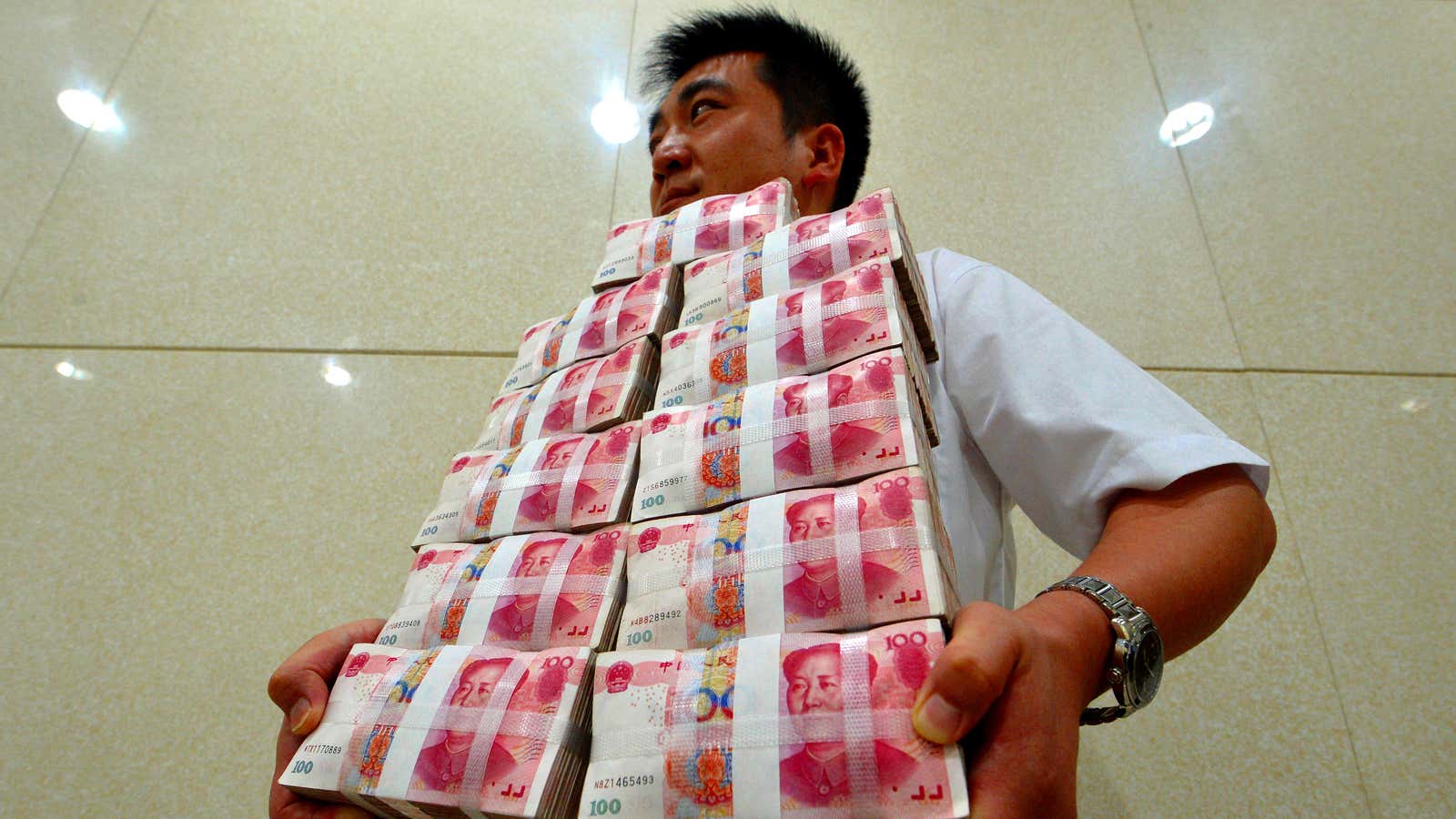One day, the rupee and the renminbi could displace the US dollar as the world’s reserve currency—the most-used means of exchange between countries. And that day is coming closer as emerging markets move to insulate their economies from the dollar’s volatility.
The dollar spent the summer riding high as investors pulled money from emerging markets on expectations that the Fed’s bond-buying program would begin slowing in September. When that didn’t happen, many emerging-market policymakers saw an opportunity to prepare for the eventual unwinding, which the IMF warns could cost trillions if handled poorly.
Now, as investors come to grips with US fiscal gridlock, further fears are being raised about the dollar. Respected economists like Barry Eichengreen are even contemplating, in a worst-case default scenario, the end of the dollar as the world’s reserve currency. That would cause pain domestically and around the globe, as the US’s borrowing costs would rise and investors elsewhere would push up the values of other currencies by dumping dollars.
So what’s an emerging market to do?
One example came today, as the central banks of China and the European Union announced a new RMB 350 billion ($57 billion) currency swap. The move is a reflection of the growing trade partnership between the EU (read: Germany) and China, second only to the EU-US relationship. The two economies exchange €475 billion in goods and services each year, and Deutsche Bank estimates that 15% will be in renminbi.
In practice, the swap will allow European businesses and investors who need Chinese currency to obtain it from the bank, while Chinese firms will have access to €45 billion. While it won’t necessarily be drawn upon early or often, it will have the affect of insulating bilateral trade between the countries from American volatility.
India’s rupee is a few steps behind—it’s not necessarily going to challenge the dollar as a means of exchange on volume alone anytime soon. But as the summer travails of emerging-market currencies have shown, the rupee, and thus India’s economy, are vulnerable to sell-offs by investors reacting to changes in wealthier countries’ interest rates.
That’s why India is partnering with the World Bank to market $1 billion in highly-rated rupee bonds to offshore investors. By relying on the World Bank (and its credit rating) to sell the bonds in dollars and convert them to rupees invested back in India, its underwriters hope to attract capital from foreign investors who might otherwise fear that Indian inflation could hurt their investment.
Both moves reflect that neither the rupee nor the renminbi can replace the dollar—yet—but they can’t afford to depend on it.
